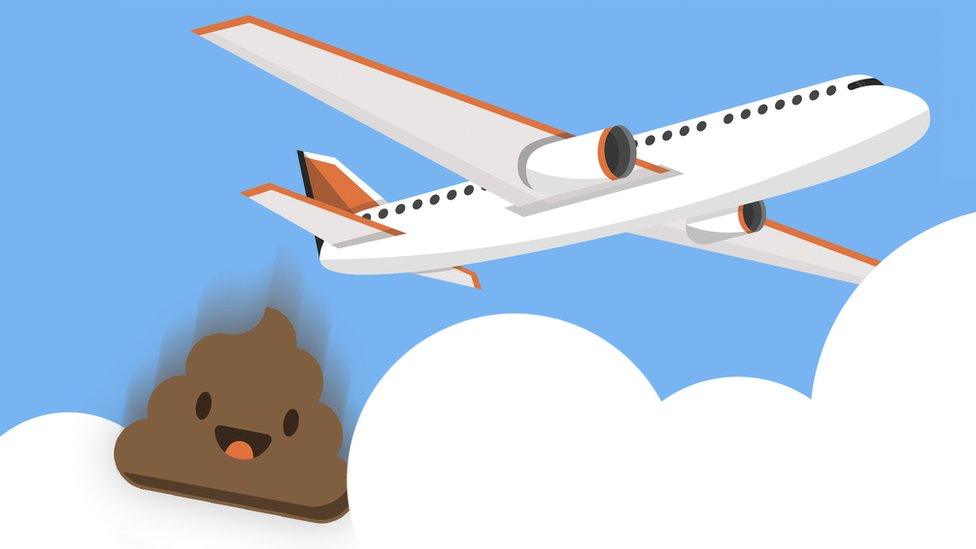Man splattered by poo falling from an aeroplane
- Published
- comments

A man in Windsor had a rather unfortunate experience this July, when a massive poo came down from on high and splattered him and his garden.
It was later revealed that the poo had come from the toilet of an aeroplane flying over his home.
This is an uncommon thing to happen - but it got us here at Newsround wondering, why did the poo come out of the aeroplane? And where does it usually go?
Plane poos through the ages
The history of poos on planes is a long one - but we will spare you the dirty details.
When planes were first created, the toilets were not much more complicated than a bucket.
To get rid of the waste and stop nasty smells, the contents of the bucket was typically chucked out the window.
Thankfully, we've moved on a long way from those days and as planes modernised, so did their privies.
Do plane toilets eject poo into the sky?
Plane toilets today typically don't eject human waste into the sky - as many people believe.
Instead, the contents of a flushed aeroplane loo is kept on board the plane until it lands and is vacuumed out.
And as a Boeing 747 toilet can be used up to 1,000 times during a flight, that can be a lot of poop!
So why did this man find his garden had been unexpectedly fertilised?
Do poos ever escape?
Some older planes do have a faulty design to their toilets, which means they might leak their waste into the air mid-flight.
Because the air is so cold at the high altitudes at which planes fly, this waste usually freezes in the air and is broken up by the friction of falling at such a fast speed.
But sometimes the waste doesn't break up and can cause damage below.
Thankfully these incidents are very, very rare.
And it's thought the unlucky man from Windsor was hit by a poo on a particularly warm day, which meant it did not freeze in the air.
The man has said he will take the incident on the chin, and the guilty plane has been found.
If you cannot see the interactive activity on this page, click here.
- Published19 November 2019
- Published5 June 2018
- Published11 January 2018
